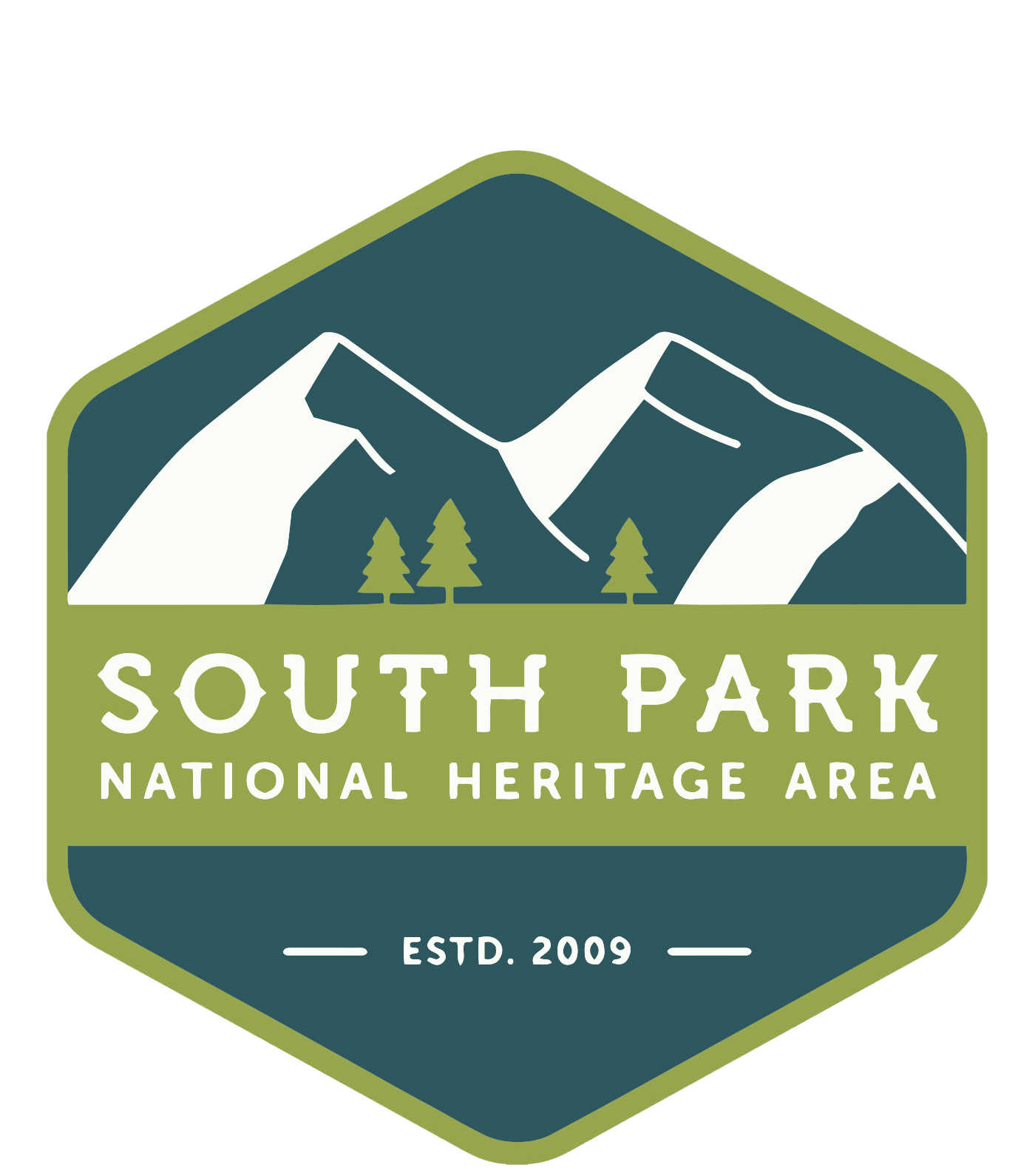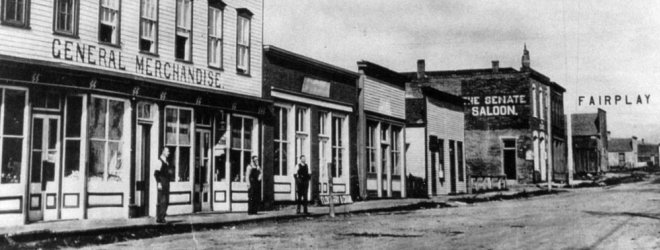Tarryall, South Park’s first mining camp, also had the distinction of being the first county seat of Park County. However, the county seat soon was transferred to Buckskin Joe (Laurette), where a miner’s court was established in 1859 and a log courthouse built in 1864. In Buckskin Joe, future U.S. Senator and Leadville “Silver King” Horace Tabor operated a store for nearly seven years. In 1867, the log courthouse and county seat were moved to Fairplay, which became the commercial and governmental center of the region and the first (1869) of five (now two) incorporated communities in South Park. The cycles of demand and valuation of minerals created an unstable economy with tremendous booms and busts, building and destroying many of the communities in South Park. Montgomery, Tarryall, Hamilton, Dudley, Buckskin Joe, Mullenville, Red Hill, Howbert, Leavick, and many others were short-lived. Today, only six of the estimated 46 communities that were formed in the 1800s survive. Living on because their economy, for the most part, did not rely solely on mineral wealth, they are: Alma, Como, Fairplay, Hartsel, Jefferson, and Lake George.
 An early and well-known settler during the mining boom was John Lewis Dyer (1812-1901), a Methodist minister who became a fixture in the Colorado mining camps as he walked or skied on his rounds. Father Dyer preached to any congregation he could find and in any building that was available, including saloons and dance halls. To supplement his meager income from church donations, he also carried the mail in winter to and from Leadville over 13,000-foot Mosquito Pass on nine-foot skis he called “snowshoes.” Eventually, Dyer was able to procure an abandoned hotel from the town of Montgomery and, in true South Park fashion, hauled it across 10 miles of difficult terrain to Fairplay, where it served as his church. Dyer is commemorated in a stained glass window in the Colorado State Capitol’s rotunda.
An early and well-known settler during the mining boom was John Lewis Dyer (1812-1901), a Methodist minister who became a fixture in the Colorado mining camps as he walked or skied on his rounds. Father Dyer preached to any congregation he could find and in any building that was available, including saloons and dance halls. To supplement his meager income from church donations, he also carried the mail in winter to and from Leadville over 13,000-foot Mosquito Pass on nine-foot skis he called “snowshoes.” Eventually, Dyer was able to procure an abandoned hotel from the town of Montgomery and, in true South Park fashion, hauled it across 10 miles of difficult terrain to Fairplay, where it served as his church. Dyer is commemorated in a stained glass window in the Colorado State Capitol’s rotunda.

